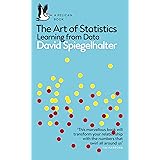One Sample Analysis in R
One sample analysis in R-In statistics, we can define the corresponding null hypothesis (H0) as follow:
Hypothesis:
1. H0:m=μ,
2. H0:m≤μ
3. H0:m≥μ
The corresponding alternative hypotheses (Ha) are as follow:
1. Ha:m≠μ (different)
2. Ha:m>μ (greater)
3. Ha:m<μ (less)
Outlier Detection:
Out.fun<-function{abs(x-mean(x,na.rm=TRUE))>3*sd(x,na.rm=TRUE)}
ddply(data,.(sample, variable),transform,outlier.team=out.fun(value))column heading should be sample, variable, value
Check outlier detection based on the above formula and remove if any.
Log Rank Test in R-Survival Curve Comparison »
Shapiro-Wilk test:
Ho: Null hypothesis: the data are normally distributed.
H1: Alternative hypothesis: the data are not normally distributed
shapiro.test(data$weight)
From the output, the p-value is greater than the significance level of 0.05 implying that the distribution of the data is not significantly different from a normal distribution. In other words, we can assume normality.
Parametric Method:
one-sample t-test is used to compare the mean of one sample to a known standard (or theoretical/hypothetical) mean (μ). the one-sample t-test can be used only when the data are normally distributed.
One sample analysis in R
one-sample t-test
two.sided
To perform a one-sample t-test, the R function t.test() can be used as follow:
LSTM Network in R » Recurrent Neural network » finnstats
t.test(x, mu = 0, alternative = “two.sided”)
one sided
t.test(data$weight, mu = 2, alternative = “less”)
t.test(data$weight, mu = 2, alternative = “greater”)
Non Parametric Method:
The one-sample Wilcoxon signed-rank test is a non-parametric alternative to a one-sample t-test when the data cannot be assumed to be normally distributed. It’s used to determine whether the median of the sample is equal to a known standard value (i.e. theoretical value).
How to run R code in PyCharm? » R & PyCharm »
one-sample Wilcoxon test
two.sided
To perform a one-sample Wilcoxon-test, the R function wilcox.test() can be used as follow:
wilcox.test(x, mu = 0, alternative = “two.sided”)
one sided
wilcox.test(data$weight, mu = 2, alternative = “less”)
wilcox.test(data$weight, mu = 2, alternative = “greater”)
Interpretation
The p-value of the test is less than the significance level alpha = 0.05. We can conclude that the mean weight is significantly different from 2g with a p-value x.
What are the Nonparametric tests? » Why, When and Methods »




Good job
Now retrieving an image set.
The Art of Statistics
₹437.00 (as of July 3 23:00 GMT +07:00 - More infoProduct prices and availability are accurate as of the date/time indicated and are subject to change. Any price and availability information displayed on [relevant Amazon Site(s), as applicable] at the time of purchase will apply to the purchase of this product.)
Nice post
Now retrieving an image set.
The Art of Statistics
₹437.00 (as of July 3 23:00 GMT +07:00 - More infoProduct prices and availability are accurate as of the date/time indicated and are subject to change. Any price and availability information displayed on [relevant Amazon Site(s), as applicable] at the time of purchase will apply to the purchase of this product.)